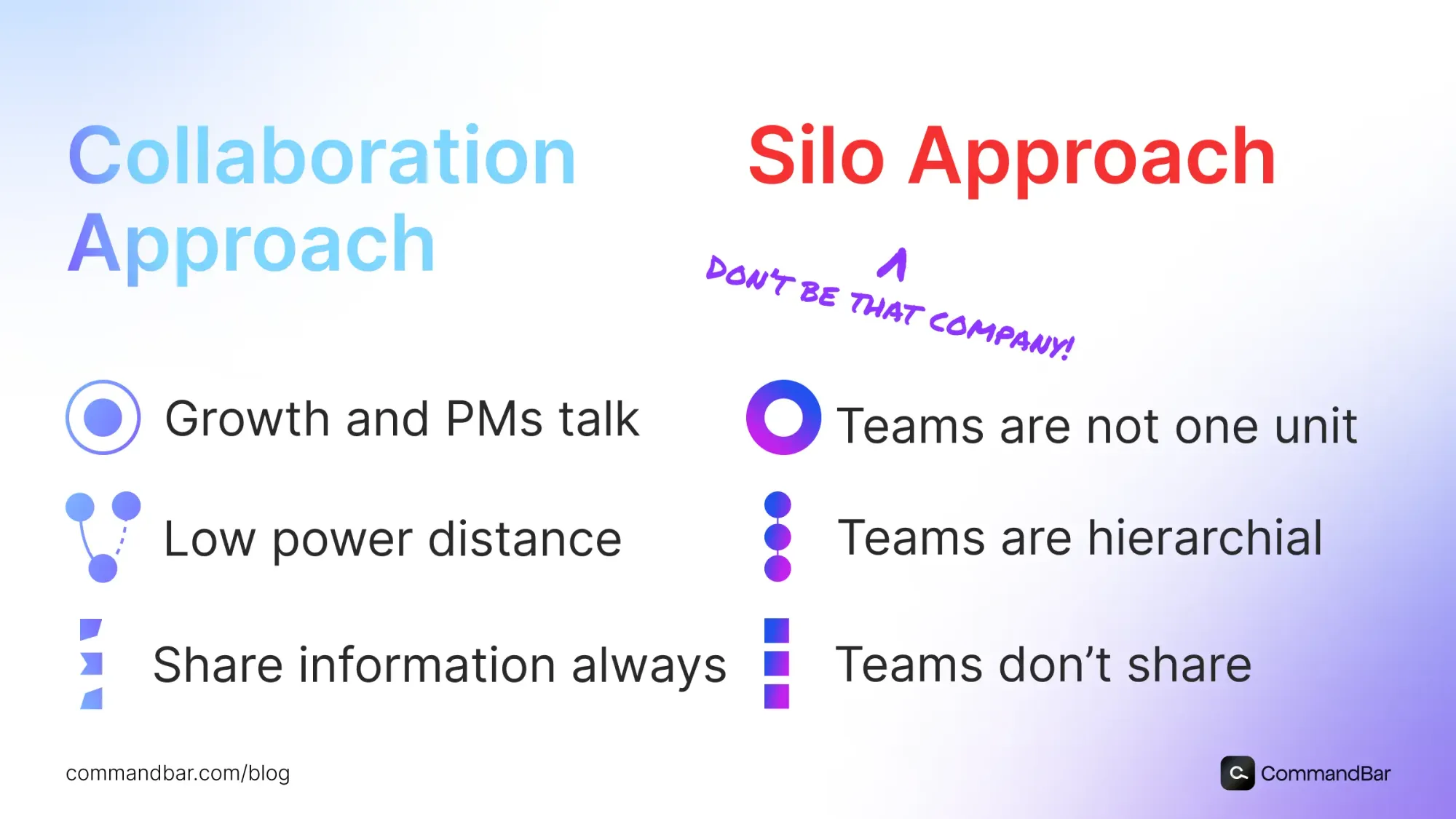If startups were a fantasy novel, product and marketing would be battling factions. And after centuries of fighting, they finally formed an alliance that would help them fight together for their common values. That alliance is named Growth.

Growth is essential to any startup. Without it, no amount of funding or charisma or Blue Bottle cold brew will keep your business alive and moving forward. Sure, there are some businesses which can be alive, profitable, and viable without growth — think of a laundromat or a vending machine.
But that's not the reality or desired end state for 99.9%+ percent of small start-ups, and for the majority of larger enterprises.
As a matter of fact, it is fundamentally antithetical to the human desire to learn, grow, and expand.
It’s no surprise then that the growth function is often a popular title or team within a lot of software businesses. From growth hacker to growth generalist, all the way up to head of growth or VP of growth, there's a wide variety of roles, responsibilities, and ways that growth operates within a company.
While not all growth rules are the same, they all share similar desire to expand the business.
Yet it can be a trap for Growth folks to focus exclusively on the business side of things, like new revenue or sign-ups only.
In fact one of the most powerful ways growth leaders can level up the impact of their efforts is by working closely with product managers and the product organization as a whole. Vice versa, PMs will find that the Growth team can be a great source of high-quality research and a vehicle for testing and user feedback.
Let's dive into how growth teams and product teams can work together to maximize outcomes for the business.
What do growth teams do? Growth 🤑 vs. Growth 📊
Now before we get into the relationship between product and growth, let's talk about the two strategic approaches to “Growth” in tech.
Growth as a catch-all for Sales and Marketing
In some organizations the growth team is just a generic phrase for the sales and marketing organization. For example, a head of growth might be the ultimate leader of the sales and marketing organizations. They’d oversee sales, marketing campaigns, and generally are focused on acquiring new customers and driving revenue. For individual contributors, you might find titles like BDR or Performance Marketing Manager under a growth org like this.
Growth as experimentation and improvement
On the other hand, a lot of organizations see growth as a unique function which straddles G2M, product, and leadership. This is particularly true the earlier the company is.
At a seed startup, one of your first hires might be a growth generalist, someone who is as comfortable (or at least as willing to be) structuring a HubSpot email campaign as they are interviewing your customers or making a TikTok.
At Series A and on start-ups, the growth team is often responsible for running experiments that optimize growth across the board, not only the top of funnel. That means not just lead collection and outbound campaign optimization, but things like churn analysis, retention Improvement, and user activation testing.
Essentially, while the growth team might be ultimately responsible for the dollars they bring in or incrementally increase or retain, there's more of a mindset of experimentation, data analysis, and structural improvements, as opposed to just hammering away at the top of funnel.
These growth teams are often much closer to the product both in terms of their day-to-day work and also structure within the organization. You might even find some growth folks in the product orh itself. Lastly, integrating Office 365 project management tools can streamline their workflows, enhance collaboration, and improve overall efficiency.
How growth teams and product can work together
Let's talk about how growth teams can work with their counterparts and products.
The core organizational tilt must be one of collaboration, not silos and fiefdoms.

Information flow
In organizations that are highly siloed, growth and product might only interact when there are big blockers that are stopping key deals. But that's a suboptimal state!
Your growth and product team should be working together closely to better understand the user experience and to improve customer acquisition, activation, and retention.
This has to be a two way street!
Growth teams can:
- Pass along direct feedback they're getting from potential customers and users in onboarding
- Share a clearer understanding of the market as a whole, including communicating pricing and feature parity expectations, why they're losing or missing deals, or sharing updates about competitor products
- Give more insight into broader market trends that product teams might be too in the weeds to notice, like startup fundraising environments or financial conditions that might impact what features or pricing levels are most important
- Share case studies or success stories
- Potential user feature requests, wants, and needs
Product teams can share:
- A clear vision and product roadmap so that growth teams can understand what product priorities are for the coming 6 to 18 months.
- The results of their user research, product positioning, and market research and planning.
- A month or more heads up on new product launches so that growth teams can produce new collateral!
Once you have all this information flowing, it can produce some really great collaboration and results! One of the most important ones is more effective experimentation.
Experiment, experiment, experiment
Great experimentation is the lifeblood of successful companies. From day one to Series A to IPO and beyond, great SaaS companies are always experimenting and trying to find ways to improve their product.
One of the best ways that growth and product teams can work together is on high-impact experiments.
Since the product team coordinates closely with the active user base and always has them in mind, they can be a great source of feedback and information to funnel to the growth team. The growth team can then conduct messaging and positioning experiments, test new sales collateral, and generally try to incorporate the most positive feedback into the company story to better attract and activate users.
Imagine that a product team is collecting detailed user feedback using a survey nudge with CommandBar, and they see that the customer effort scores for a particular feature are amazing. They can pass that along to growth, who could then choose to run some experimental messaging around the ease of use for this feature. Even better, they could position it against a particular competitor who has a clunky UX for that feature in their product.
In the other direction, the growth team also likely has a stronger understanding of what is resonating to free agent users in the market who haven't picked a solution yet. This can be extremely helpful when backed with quality data to inform future product decision making.
For example, if product hears from growth ICs that they are losing deals because prospects want a specific feature set which a competitor has, they can consider adding it to the roadmap. They could run a painted door test with existing users to test the validity of this anectdotal insight to better vet it before adding it to the roadmap.
Conclusion
It's essential that growth and product work closely together to gather and share user feedback, conduct insightful and impactful experiments, and generally work coherently together. When you have silos across the teams, you set yourself up for failure. At earlier stage startups, it's much easier to have collaboration, but as you grow your teams will apparently take on characteristics, fiefdoms, and interests of their own. As a product manager or growth leader, it's essential that you forge ties between the two groups within the organization, to ensure the best possible outcomes for your company and users.















